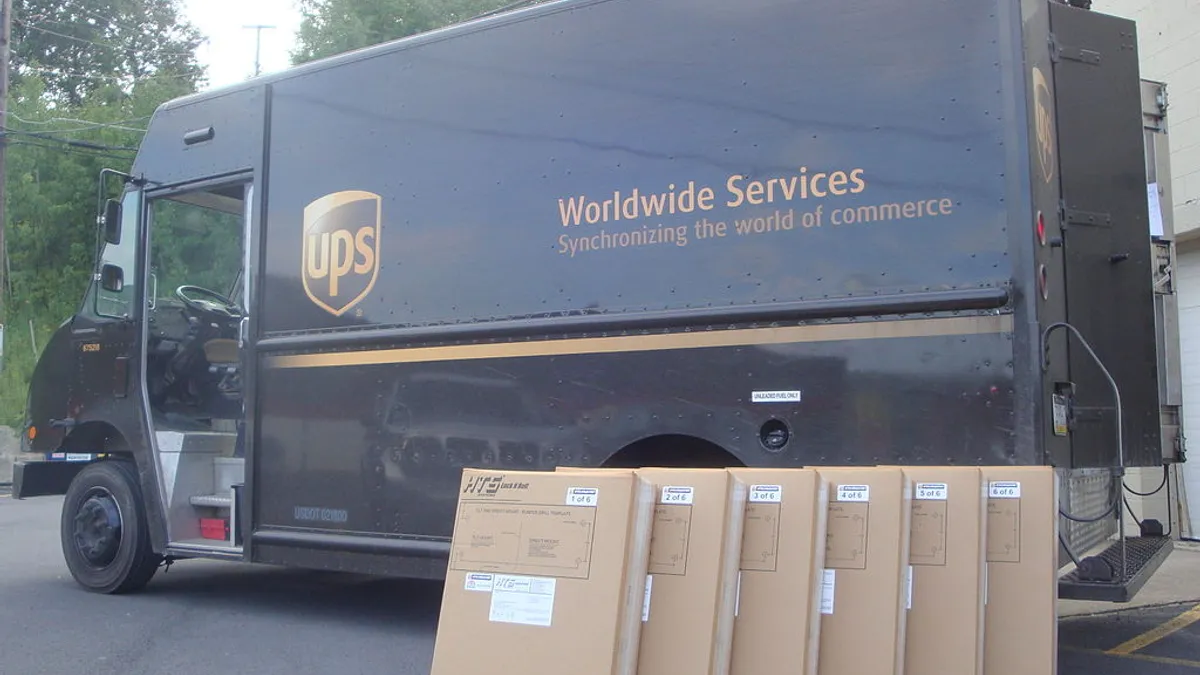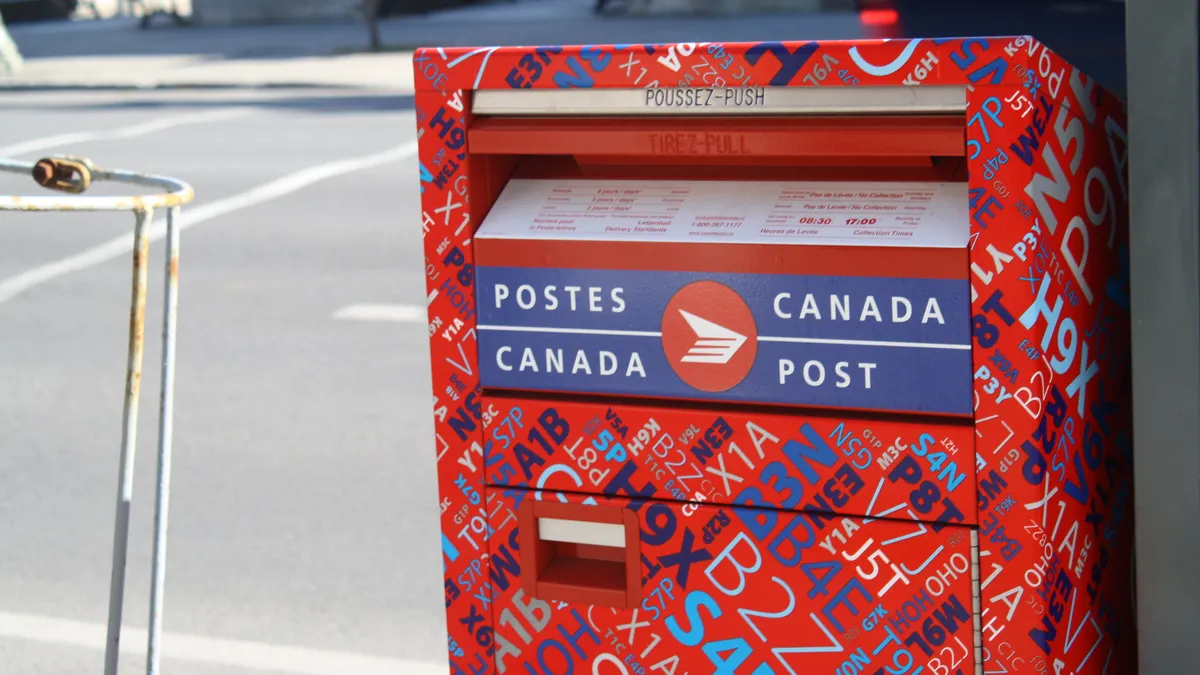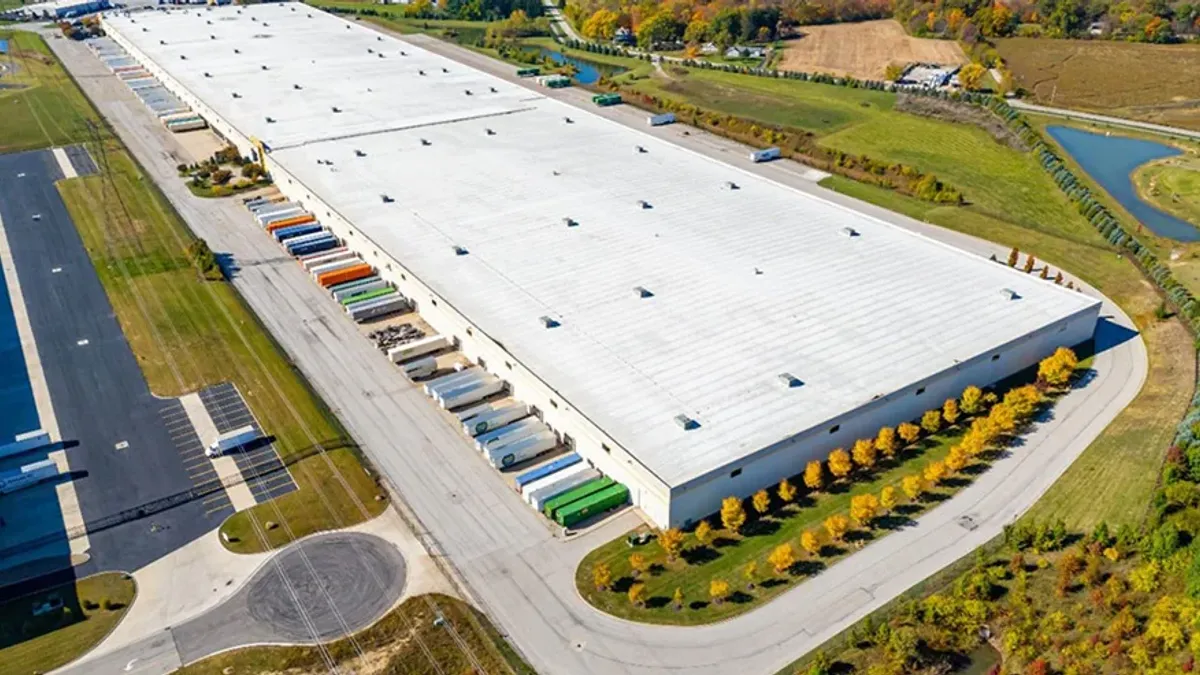UPS shocked the shipping and retailing community when it predicted holiday returns would peak early for the 2018 shopping season — before Christmas — followed by a second peak after the new year.
"That was big news," said Jim Brill, product marketing manager for the UPS Returns Portfolio. "Even around [UPS], people were raising their eyebrows at that."
That predicted surge peak of returns the week before Christmas came to fruition, Brill told Supply Chain Dive. UPS pegged Wednesday, Dec. 19, six days before Christmas, as National Returns Day, when the largest number of packages would be shipped back to the retailer. "That’s what actually happened," Brill said, with 1.6 million returns that day, higher than the predicted 1.5 million returns it expected for the day.
For the 2017 holiday season, UPS National Returns day was Jan. 3, 2018, with 1.4 million packages returned, and the 2016 holiday season date was Jan. 5, 2017, with more than 1.3 million packages returned.
Buy earlier, return earlier
This season, a couple of things caused the earlier return peak. For one, consumers are learning not to wait until the last minute, David Sobie, co-founder and CEO of Happy Returns, told Supply Chain Dive.
That lesson is fresh in many minds, after the 2017 holiday season brought snow storms and increased numbers of packages, making it difficult for some carriers to deliver on time.
In 2017, about 45% of those returning gifts did so between Dec. 26 and 31, with 50% waiting until January to return, according to an Optoro study. Consumers are now recognizing the need to shop and return earlier.
A consumer behavioral shift is also driving earlier returns. Shoppers are given incentives for buying earlier than they used to for the holiday season, Brill said, including Black Friday deals offered a few weeks before Thanksgiving. In addition, major retailers including Amazon, Walmart and Target offered variations on free shipping with no minimum purchases, including Amazon to non-Prime members.
The first wave of returns is thought to be more from people shopping for themselves, said Sobie. "It’s not just about shopping for gifts," he said. The whole site is on sale."
As of early November, 55% of consumers already started buying holiday items, according to the National Retail Federation (NRF).
The second peak — and a third one?
UPS anticipated receiving 1.3 million return packages on Jan. 3. That’s the secondary returns spike, which Brill said met expectations, in the first week of January.
While Brill didn’t have all this season’s numbers available, he said outbound volume typically doubles from the 18-19 million packages per day during the year to 38-39 million packages shipped per day through UPS during the holiday season.
During the big holiday push, returns double as well. Of the 800 million packages UPS anticipated it would deliver through the holiday season, 24 million are returns just for December, according to The Wall Street Journal. "The retail holiday segment is the main driver of [returns]," Brill said, not other industry segments like healthcare, professional services, high tech, automotive or manufacturing.
Brill tracks the forward moving packages versus returns from November through January via service level indicators in the UPS coding.
He said yet another bump in returns typically comes the second or third week in January, as returns from gift cards received and used during the holidays are processed.
E-commerce sales and returns go hand-in-hand
National Returns Day varies year to year, but overall trends show returns are increasing. The anticipated returns value is $94 billion this holiday season, $4 billion over the 2017 holiday season, Tobin Moore, CEO of Optoro, told Supply Chain Dive via email.
Return rates from brick-and-mortar store purchases are around 8%, while the e-commerce purchase return rate can be 20-40%, depending on the product category, Moore said.
"Despite the rise in e-commerce shopping, we’ve found that 87% of consumers prefer to return items in-store," Moore said. Both Optoro and Happy Returns offer in-store return solutions. Happy Returns has more than 275 Return Bars in brick-and-mortar locations, allowing in-person returns for online retailers.
Carriers only see the number of boxes processed, but Happy Returns sees the actual items, Sobie said. In December, Happy Returns collected 2.2 items per return, and Jan. 1 through Jan. 11, it was 1.7 items per return.
"As e-commerce continues to grow, and as more of a percentage of overall retail sales, I expect returns will grow."

Jim Brill
Product Marketing Manager, UPS Returns Portfolio
Just as the first peak of returns is partly attributable to consumers shopping for themselves, the higher number of items per return in December is, as well. “When shopping for myself, I might buy multiple sizes, knowing I’ll return ones that don’t fit best,” Sobie said. For gifts, people are more likely to estimate the preferred size and color, buying one item. The item won’t be opened until Christmas and returned later.
One other potential reason for increased holiday returns is a longer shopping season. The 2018 peak shopping season (Black Friday to Christmas Eve) was 32 days, with Thanksgiving and Hanukkah arriving earlier than usual. In 2019 there will be 27 shopping days.
As for the 2019 holiday peak predictions, Brill said UPS doesn’t start those prognostications until mid-year. And they haven’t finished their analysis for this season. "The high level expectation is that as e-commerce continues to grow, and as more of a percentage of overall retail sales, I expect returns will grow," Brill said.





















